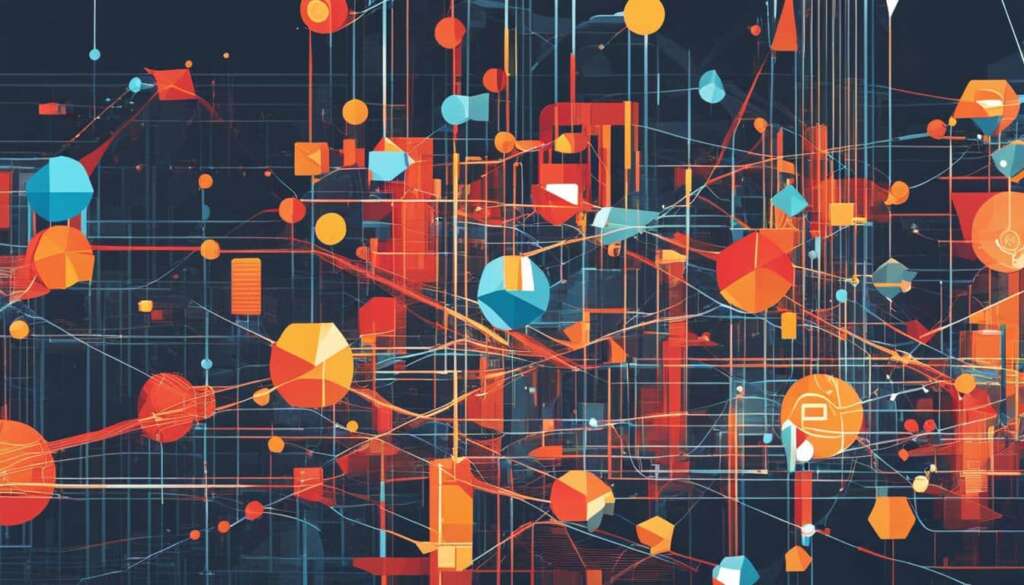Table of Contents
Welcome to our comprehensive guide on how to use ChatGPT effectively, while staying undetected. As powerful as ChatGPT is for generating text, there are concerns about plagiarism and detection that you need to be aware of. In this article, we will provide expert strategies, security measures, and practical tips on how to prevent being caught using ChatGPT.
Using ChatGPT may raise questions about how to use it skilfully and avoid detection. Our goal is to equip you with the necessary knowledge to ensure your ChatGPT usage remains concealed. With our foolproof tips and techniques, you can stay under the radar and implement ChatGPT confidently.
Let’s dive into the various aspects of ChatGPT usage, from understanding detection risks to combining ChatGPT with editing and paraphrasing techniques. We will explore strategies to avoid AI detection, as well as insights on detecting ChatGPT usage in text. Furthermore, we will discuss the role of plagiarism checkers in identifying AI-generated text.
Throughout this article, we’ll provide practical advice on how to use ChatGPT effectively, ensuring that your usage remains undetectable. Whether you’re a writer, a student, or a professional, our guidance will help you maintain discretion and prevent any unintended consequences. So, let’s begin with understanding ChatGPT and the detection risks associated with its usage.
Understanding ChatGPT and Detection Risks
ChatGPT, developed by OpenAI, is a remarkable language model that is capable of generating text that closely resembles human speech. However, alongside its powerful capabilities, using ChatGPT also presents certain risks that need to be understood and addressed.
One of the primary concerns when using ChatGPT is the potential for plagiarism and the risk of detection. As an AI-driven tool, there is always the possibility that the generated content may be flagged as unoriginal or suspicious. These risks can have serious consequences, ranging from academic penalties to reputational damage.
Therefore, it is crucial to have a comprehensive understanding of the risks involved in using ChatGPT and to employ strategies to mitigate them. By being proactive in addressing these concerns, users can ensure that their utilization of ChatGPT remains undetected.
Plagiarism Concerns with ChatGPT
ChatGPT’s ability to generate text that mirrors human language raises concerns about plagiarism. When using ChatGPT to create content, it is essential to ensure that the output is original and does not infringe upon copyright or intellectual property rights.
Plagiarism, whether intentional or unintentional, can have severe consequences and be considered unethical. It is important to uphold the principles of academic integrity and originality. Hence, understanding how ChatGPT operates and how it can be detected for plagiarism is crucial to avoid potential pitfalls.
Detection Risks
Alongside the issue of plagiarism, there is also the risk of detection when utilizing ChatGPT. Various tools and techniques exist for identifying AI-generated text, and it is vital to stay ahead of these detection methods.
AI detection algorithms are becoming increasingly sophisticated and can identify patterns and algorithms used by language models like ChatGPT. Therefore, it is necessary to familiarize oneself with these detection methods to minimize the risks associated with ChatGPT usage.
Combining ChatGPT with Editing and Paraphrasing Techniques
When using ChatGPT, it is essential to incorporate editing and paraphrasing techniques to avoid AI detection and plagiarism. By doing so, you can ensure that the generated text is unique and less likely to be flagged by tools like Turnitin.
Editing plays a crucial role in refining the output of ChatGPT. While the initial text generated may provide a foundation, it is necessary to carefully review and modify it to meet your specific needs. Consider adjusting the tone, style, and structure to align with your writing objectives and make the text truly original.
Paraphrasing is another effective technique to avoid detection. By rephrasing the generated content using different words and sentence structures, you can significantly reduce the likelihood of plagiarism detection. Through paraphrasing, you maintain the essence of the ideas while presenting them in a unique manner.
Additionally, combining the use of synonyms, sentence rearrangement, and adding personal insights can further enhance the uniqueness of the text. This approach helps to mask any similarities between the generated text and existing sources, making it harder for plagiarism detection tools to identify it.
Using ChatGPT for Writing: Tips and Best Practices
To maximize the effectiveness of ChatGPT in your writing, consider the following tips and best practices:
- Set clear objectives: Clearly define what you want to achieve with ChatGPT to ensure the generated text aligns with your goals.
- Proofread and revise: Always proofread and revise the generated text to eliminate any grammatical errors or inconsistencies.
- Add a personal touch: Inject your own unique insights and opinions into the text, ensuring it reflects your style and expertise.
- Cite sources: If you use information from external sources, remember to properly cite and reference them to avoid any plagiarism concerns.
By combining ChatGPT with editing, paraphrasing techniques, and adhering to recommended writing practices, you can leverage the power of AI while maintaining the integrity of your work.

Avoiding AI Detection with ChatGPT
When utilizing ChatGPT, it is crucial to consider the ethical implications, especially in academic settings. The use of AI technology for academic work raises concerns regarding originality, authenticity, and fair attribution. However, by adopting certain strategies, you can ensure that your ChatGPT usage remains undetected while maintaining academic integrity.
Tips for Undetectable ChatGPT Usage
- Edit and revise: After generating text using ChatGPT, carefully review and make necessary edits to enhance the originality of the content. This includes restructuring sentences, modifying wording, and incorporating personal insights or perspectives.
- Paraphrase effectively: Instead of using the generated text verbatim, utilize paraphrasing techniques to express the same ideas in your own words. This helps to create a unique piece of writing that is distinct from the original ChatGPT output.
- Combine multiple sources: Incorporate information from various reliable sources into your work alongside the ChatGPT-generated content. By integrating different perspectives, you can create a more comprehensive and authentic composition.
- Cite external sources properly: If you include information or ideas from external sources in your work, ensure that you provide proper citations and references. This demonstrates academic integrity and strengthens the credibility of your writing.
By implementing these strategies, you can effectively use ChatGPT for academic purposes while minimizing the risk of AI detection. It is essential to prioritize originality and ensure that the intellectual property rights of others are respected.
Remember, the goal is not to deceive or engage in unethical practices, but rather to leverage ChatGPT as a tool to enhance your own creative thinking and generate innovative ideas within the bounds of academic integrity.
Despite efforts to avoid detection, it is important to note that the use of AI technology like ChatGPT raises broader ethical implications. As advancements in AI continue, it is crucial for users and developers alike to engage in ongoing discussions about the responsible and ethical use of these technologies.
To further understand the potential consequences and ethical considerations surrounding ChatGPT usage, let’s explore the implications and risks of utilizing AI language models in academic settings.
| Ethical Considerations | Description |
|---|---|
| Academic Integrity | Ensuring originality, proper attribution, and avoiding plagiarism when utilizing AI-generated content in academic work. |
| Authenticity | Maintaining the credibility of one’s work by clearly distinguishing between human-authored and AI-generated text. |
| Fair Use | Adhering to copyright laws and appropriately utilizing content generated by ChatGPT without infringing on the rights of others. |
| Privacy | Safeguarding personal data and confidentiality while interacting with AI models like ChatGPT. |
| Transparency | Examining the biases and potential ethical issues related to AI systems, such as ChatGPT, to promote transparency and fairness. |
Detecting ChatGPT Usage in Text
Identifying chatbot-generated text can be a challenging task, but there are certain signs that can help you spot AI-generated content. By being aware of these signs, you can better evaluate the authenticity of a piece of text and detect potential usage of ChatGPT.
Repetitive or Unusual Patterns
One common sign of chatbot-generated text is the presence of repetitive or unusual patterns. ChatGPT tends to generate text in a consistent manner, often repeating certain phrases or using similar sentence structures. If you notice a text containing redundant information or phrases that seem out of place, it may be an indication of AI involvement.
Lack of Originality
Another telltale sign is the lack of originality in the text. ChatGPT relies on preexisting data to generate responses, so it may struggle to produce truly unique content. If you come across a piece of text that seems generic or lacks a distinctive voice, it could be a clue that it was generated by an AI language model like ChatGPT.
Discrepancies in Knowledge
AI-generated text may also exhibit discrepancies in knowledge about recent events or specific topics. While ChatGPT has access to vast amounts of information, it may not always provide accurate or up-to-date responses. If you encounter a text that displays outdated or incorrect information, it may indicate the involvement of an AI language model.
AI-generated text often lacks the nuances and contextual understanding that human-generated content possesses. This can lead to inconsistencies and inaccuracies, which can be key indicators of chatbot usage.
Combining Indicators for Accuracy
It’s important to note that these signs are not foolproof evidence of ChatGPT usage but are rather indicators that can help you make an informed judgment. Detecting AI-generated text requires a careful assessment of multiple factors rather than relying on a single sign. By considering repetitive patterns, lack of originality, and discrepancies in knowledge, you can enhance your ability to identify potential ChatGPT-generated content.
Plagiarism Checkers and ChatGPT
While there is currently no plagiarism checker specifically designed to detect text generated by ChatGPT, certain plagiarism detection tools can still help identify potential instances of AI-generated text. These tools, like Turnitin, PlagScan, and Copyleaks, compare a piece of text to a database of other texts to identify instances of copying or paraphrasing.
Although these tools are not specifically tailored for detecting ChatGPT-generated text, they can still provide valuable insights and help identify potential instances of AI-generated content. By comparing the language, structure, and patterns in a given text to existing sources in their databases, these plagiarism checkers can pinpoint similarities and raise flags.
However, it is worth noting that ChatGPT’s capabilities can make detection more challenging. As an advanced language model, ChatGPT outputs text that closely resembles human writing. Therefore, it is crucial for plagiarism detection tools to continuously evolve and update their algorithms to stay effective.
The Limitations of Plagiarism Checkers
Plagiarism checkers are valuable tools for identifying instances of textual similarity. However, they have certain limitations when it comes to detecting ChatGPT-generated text. Due to the unique nature of AI-generated content, it may not always be detected as plagiarism by these tools. As AI models improve and become more sophisticated, the detection methods will need to evolve as well.
When using plagiarism checkers, it’s important to interpret the results with critical thinking and context in mind. While a positive detection can indicate potential plagiarism, false positives are also possible, especially with AI-generated text that may exhibit similar patterns or phrasing to existing sources.
Tackling Plagiarism with ChatGPT
To prevent unintentional plagiarism when using ChatGPT, it’s essential to follow best practices and implement effective plagiarism prevention strategies:
- Paraphrase and rephrase: After generating text with ChatGPT, take the time to rephrase and paraphrase the content to make it unique and less identifiable as AI-generated text.
- Combine with original content: Incorporate your own original thoughts, ideas, and insights alongside ChatGPT-generated text to create a more authentic and personalized piece of writing.
- Edit and refine: Carefully review and revise the generated text to ensure coherence, clarity, and originality. Make necessary adjustments to match your writing style and voice.
By following these strategies and using plagiarism checkers as a complementary tool, you can minimize the risk of unintentional plagiarism while harnessing the power of ChatGPT for creating unique and valuable content.
Conclusion
In conclusion, implementing the right strategies is crucial when using ChatGPT to ensure undetection and maintain discretion. By combining editing and paraphrasing techniques, you can make the generated text unique and less likely to be flagged by plagiarism detectors. It is also important to remain mindful of plagiarism concerns and the ethical implications, especially when using ChatGPT in academic settings.
Additionally, utilizing plagiarism checkers such as Turnitin, PlagScan, and Copyleaks can help identify potential instances of AI-generated text, providing an extra layer of assurance. While there is no foolproof method to avoid detection completely, these measures can help reduce the risk and enhance your ability to stay under the radar.
As with any emerging technology, it is crucial to use ChatGPT responsibly and be aware of the potential consequences. Leveraging the power of ChatGPT in a manner that adheres to ethical guidelines will not only ensure your own safety but also contribute to the responsible and ethical usage of AI in general. By following these guidelines, you can harness the benefits of ChatGPT while minimizing the risks associated with its usage.
FAQ
How can I use ChatGPT effectively while avoiding detection?
[Answer]
What are the risks associated with using ChatGPT?
[Answer]
How can editing and paraphrasing techniques help in maintaining discretion with ChatGPT?
[Answer]
How can I avoid AI detection when using ChatGPT?
[Answer]
What are some indicators that text has been generated by ChatGPT?
[Answer]
Are there plagiarism checkers that can detect ChatGPT-generated text?
[Answer]
Feel free to provide the answers based on the content.







